There are many interesting connections between the Phoenicians, Greek Ionians and the Old Irish that can be found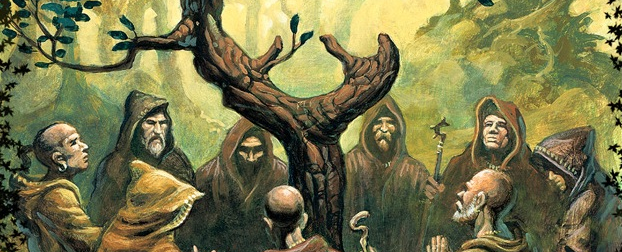 all throughout the early history of Ireland. These similarities between these people are often found in their religious customs, Gods, Goddesses, family and place names they had imported into Ireland.
all throughout the early history of Ireland. These similarities between these people are often found in their religious customs, Gods, Goddesses, family and place names they had imported into Ireland.
In my last article, The Druid and Phoenician Coarbs of Ireland, I explained the relationship between the Druid and Culdee Coarbs with the Phoenician Corybnates. It can safely be said they are the same people. Another one of these connections of research I would like to present to you deals with the Cabiri of the Phoenicians, the Egyptians and the Cabiri of the ancient Irish. In studying the rites of the ancient Druid Cabiri who were celebrated in Ireland, they can be found many centuries before in ancient Phoenicia and Greek Ionia that is attested by many of the world’s most famous authors of yesteryear.
WHAT IS THE MEANING OF CABIRI?
The Latin name Cabiri and Old Irish Cabur is derived from the Phoenician Hebrew word Kabir that is sometimes spelled Cabir, Chabir, Chabiru and Chabireh. Cabur was once of the ancient God of Ireland being that of the ancient Irish pantheon of Gods known as Axire, Axcearas, Coismaol, and Cabur. The priests of this God were the Druid Caburi or Cabiri.
In order to trace their true origins, we must look back over time at the various people who had used the same or similar words before they were in Ireland and all the evidence over the last 3,500 years points to the birthplace of Western civilization, the ancient Holy Island named after the Greek word for creation, Crete (Kriti).
For example, the word Cabir or Kabir can be found in the Scriptures such as in the Orthodox Jewish Bible (OJB) is is written, “See, El is kabir (mighty), and despiseth not any; He is kabir in ko’ach lev (strength of understanding). (Iyov 36:5) Hence, in the etymology of Cabiri, we find it means “strong or powerful. El was a name for God and thus the followers of El were the Hebrew Kabirs or the Latin Cabiri were the strong and mighty men who followed the true God.
This explanation of the great Kabir and the followers known as the Kabiri or Cabiri coincides almost exactly with the biblical stories of the Sons of God in Genesis who are sometimes called the Nephilim, Anakim, Annunaki and the mighty men of renown. This exactly coincides with the true history told to us by both Plato and Plutarch who had also called these people,”the mighty men who were of old, men of renown from Boeotia.”
The ancient Phoenician historian, Sanchoniatho had written on the history of his people with whom the Greeks were the inheritors and scribes of these same said stories. According to Sanchoniatho, the mysteries of the Cabiri were first celebrated by the Phoenicians, and introduced into Greece. He had written that first or original Cabiri were the eight Sons of Sydyc, who was a Canaanite. They lived in the Days of Taaut of Thoth who is the same as the Phoenician Hermes. Pausanias, the Greek historian and geographer who lived in the time of his cousin, the Roman Emperor Hadrian, relates, that the Mother of the Gods was anciently worshiped at Thebes with the Cabiri, whose Names and Mysteries he durst not divulge.
If we look to the history of Thebes, we find that it was the Capital of Boeotia, said to have been founded in 1500 B.C. by the Phoenician Prince, Cadmus who was the son of Agenor, king of Phoenicia. These dates, and historical accounts predate most the Irish history that we know of by at least 700-1,500 years depending on varying accounts and who is in control of telling this history.
The Greek historian relying on the ancient writing of the Phoenicians relay the story that it was Cadmus was the Father and Founder of the Ancient City of Thebes and whose followers were known as the Boetians. The name Cadmus is originally derived from the Phoenicians Cadmon or Cadam-On, which denotes Cadam, meaning- The Son (Son of God-Nephilim). He is said to be the first person to introduce the use of letters into Greece.
The Phoenician Cadmus, AKA the Cadmonites of Palestine had come into Greece from ancient Palestine 1493 years before the Christian era, and to have died 61 years after. Thebes was also the city of the god Amon-Ra and where the Temple of Light was located, known of today as the Temple of Luxor.The name Thebes is derived from the Greek word ‘Theba’ meaning Ark, and we all know of the the Ark of the Covenant.
We find more mentions of the Cabir in Genesis where it is written, “all those chabiru, were joined in the vale of Siddim.” (Gen. xiv. 3. ) Exodus states, “five curtains shall be chabur together; and Psalm xciv. 20. “Shall the throne of iniquity have chabir with thee, i. e. fellowship.” In Job, viii. 2, the words of thy mouth be like a cabir wind; more cabir in days than thy father—here it means numerous and “Behold God is Cabir,—great or abounding.” Jud. xx. i. All the men of Israel were gathered together against the city, (Chabirim) knit together as one man, and Job xl. 25. used it in the like seuse, the Chabirim (companions) make a banquet for them.
In the Gnostic Bible, it is written that Jesus, the great Kabir, chanted a song of praise in the great Name. After the death of the Great Kabir, James was the first who officiated st the Gnostic Mass in Jerusalem.(1) The word “Kabir” is well-known in India and in the Middle East. The Rådhaswāmis consciously imitate. the Christian doctrine of the Trinity; they quote Kabir, and the Sufis, and St. John : they are veritable Gnostics.
The Father of History Herodotus explains that this word Cabiri is in fact a Phoenician Hebrew name, and he also quotes Pliny stating that the eight great gods of the Phoenicians, the offspring of one great father, Sydik, the “just,” were called Cabiri. Herodotus had written, “Some believe them to have been Ceres, Proserpine, and Pluto; and others add a fourth, supposed to be Hermes; while others suppose them to have been Jupiter, Pallas, and Hermes.
They were also worshipped at early time in Lemnos and Imbros. Some think they were an inferior order of gods, but were probably in the same manner as the third order of gods in Egypt, who in one capacity ranked even above the great gods.
The name Cabiri was doubtless derived from the Semitic word kabir, “great,” a title applied to Astarte (Venus), who was also worshipped in Samothrace, together with Pothos and Phaeton, in the most holy ceremonies, as Pliny says (xxxvi. 5). The eight great gods of the Phoenicians, the offspring of one great father, Sydik, the “just,” were called Cabiri, of whom Esmoun was the youngest, or the eighth (as his name implies), the shmoun, “eight,” of Coptic, and “the man” or “son of man” of Arabic, and of Hebrew.” (3)
THE RITES AND SACRED MYSTERIES OF THE CABIRI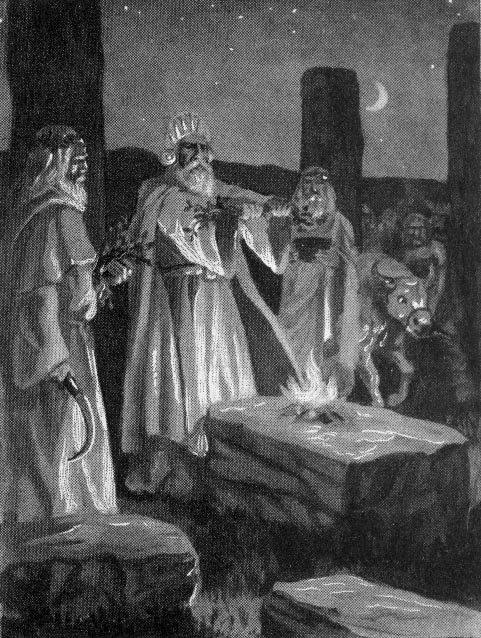
In Ireland, the rites of the Phoenician Hebrew Cabiri were celebrated by their descendants of the Celtic Druids who are of the same race. One of the most formidable of the gods was called Samhain, or Balsab, and an old Irish: glossary calls Samhan, cabur. In the ancient Irish mythology, Cabur was the stone-builder of Tara, and in the story of King Solomon, he employs the help of a worm named Shamir to help him build Solomon’s Temple.
These rites are described as ceremonies the deal with the sacred fire, and the festival known as Samhain, or the rites of Baal with the Druids. One of their main festivals was on the day of November 1st. This day was originally celebrated as Samhain, (Bal or Baal Samhain and Beltine) – a sacred festival of the ancient Celts and Druids who were also known as pagans.
November 1st is the first day of winter, when the High Kings of Ireland held festival of traditional fires of Samhain at Tara Hill with a great feast to celebrate the vernal equinox, the death of the god of fire, Baal and a corresponding to the festival of his death. The meaning of the Gaelic or Old Irish word Samhain is “summer’s end,” and “Bal or Baal” signifies both in Gaelic as in Phoenician, “the lord of heaven”, and in the Punic language signified power, knowledge; bale in Irish signifies the same.
It is said that in the 6th century, the former Irish Druid, Saint Patrick was the first Christian to confront his kin in Ireland who were pagans and High Kings of the land, at their annual vernal fire on Samhain. In order for St Patrick to symbolize his dedication to his new religion of Christianity and in condemnation of many of the brutal pagan rites associated with these pagan festivals, he had lit a fire in a different area than the traditional fires of Samhain on a hill called Slane Hill. Hence, St. Patrick had kindled or had taken over the divine fire and festival for the Church to signify the New Testament (New Law) under the banner of Christianity and the Universal Church known today as the Catholic Church.
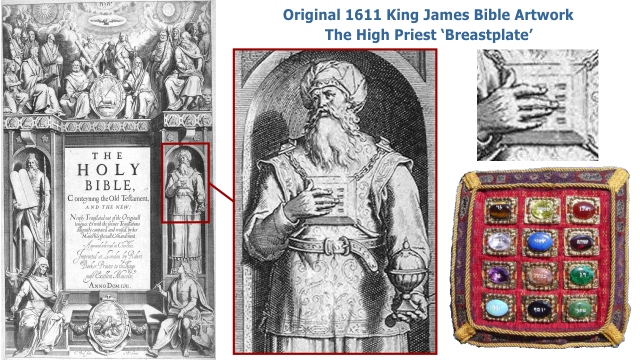 THE PHOENICIAN CABIRI AND THE KOHANIM LEVITES
THE PHOENICIAN CABIRI AND THE KOHANIM LEVITES
The Phoenician Cabiri according to Herodotus involved the God of Fire known as Vulcan. The Phoenician Tyrians named their priests Cohanim (Kohanim). In the Torah, the priests of Baal are referred to as Cohen or Kohen or plural: Cohanim or Kohanim, which is a Hebrew word for priest or king, and the word Bol-Khan, specifically refers to the priests ofBaal.
These priests claim direct patrilineal descent from the biblical Aaron who is often called “‘Aaron the Priest“‘ (אֵהֲרֹן הֵכֹּהֵן) and once Aaron the Levite (אַהֲרֹן הַלֵּוִי) (Exodus 4:14). He who was the older brother of Moses, (Exodus 6:16-20, 7:7; Qur’an 28:34) and a prophet of God, that which we find in Baal which means “Lord and Master.”
Melchizedek is the first person in the Torah to be titled a Kohen (priest), the medrashrecords state that he was preceded in priesthood (kehuna) by Adam. Rabbinic commentarians to the Torah explain that Melchizedek — essentially Shem — was given the priesthood (Hebrew; kehuna) by receipt of his father Noah’s blessing “G-d beatified Yefethand will dwell in the house of Shem”;i.e., he will merit to serve and host God as a Kohen. Melchizedek is seen as a divine being and Hebrew titles, such as Elohim are applied to him. According to this text Melchizedek will proclaim the “Day of Atonement” and he will atone for the people who are predestined to him. He also will judge the peoples.
The etymology of the word Cohen or Kohen is also connected with the Persic word “Khan”, which is a title of dignity or ruler of a monarchy, and is also translated as king in the East. This is where we get the name “king” in English and other words like Conah, Conan, and Konig. The word Bol-Khan, which means the priest of Baal are the same priests that had come from Tyre and are now called the Jewish Kohanim.
These mysteries of Baal were said to once take place on the island seven miles off Crete once called Lemnos, but also known as Cos, Coos, Chios, Delos, Patmos and now Dia. The priests of Baal were in great numbers (1 Kings 18:19), and of various classes (2 Kings 10:19) throughout the land. Their fraud was exposed however in a great contest with the prophet Elijah on Mount Carmel. Out numbered hundreds to one, Elijah, with the power of God, destroyed them all (1 Kings 18:16-40).
The book, Dictionary of Antiquities, s. v. Cabeiria by Mr. Kenrick concludes that “in their original conception the Cabiri represented the elements of fire and air combined in the idea of flame.” Fire seems to have been an object of the Cabiriac worship.
At Lemnos, the mysteries took place at night, and lasted nine days. Sacrifices were offered to the dead, all fires were extinguished through the island, and pure fire, brought from Delos, the isle of Apollo, was distributed, and a new life began. The analogy to Druidical rites is here very striking. The island referred to by Artemidorus was probably that of “ Sena in the British sea, opposite the coast of the Osismii,” described by Mela as the seat of an oracle of a Gallic divinity.”(2)
The Island of Lemnos which sits just seven miles off the Holy Island of Crete has also been known by several different names such as Kos, Coos, Chios, Delos, Patmos and now it is called Dia. This island was once home to God of Fire and the original Priests of Baal who are the Phoenician Kohanim Priesthood such as the Father of Medicine Hippocrates. I had written about Kohanim Priesthood from Kos (now Dia) in my previous articles such as, The Origins of the Kohen Priesthood, Dragon Isle: The Kohens of the Lost Island of Dia, and The God of Fire.
According to Homer, the Greek God of Fire was 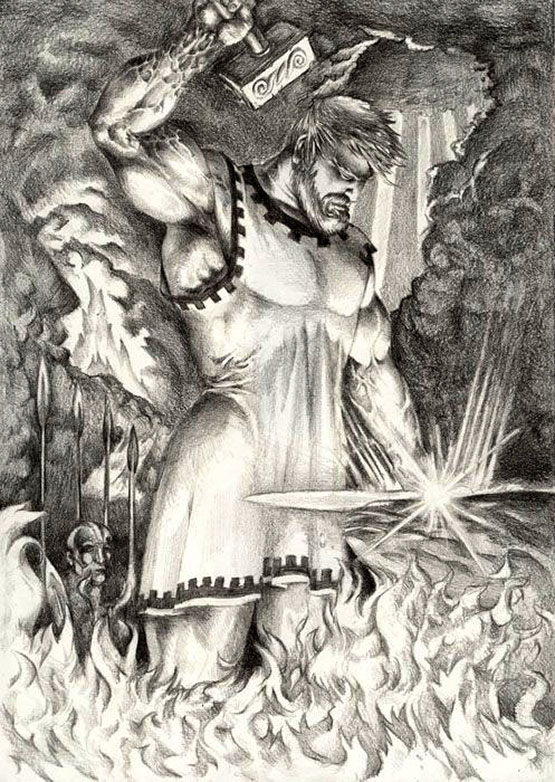 Hephaestus. He was the son of Zeus who was born on Crete and Juno. However, Hesiod had said he was just the son of Juno only, who was unwilling to be outdone by Jupiter when he had given birth to Minerva. (Thong, 927 )
Hephaestus. He was the son of Zeus who was born on Crete and Juno. However, Hesiod had said he was just the son of Juno only, who was unwilling to be outdone by Jupiter when he had given birth to Minerva. (Thong, 927 )
He is usually depicted with a hammer and tongs at his anvil, with his right arm bare and sometimes with a pointed cap on his head. Hephaestus was also born lame, and his mother was so shocked at the sight of him that she flung him from Olympus. Homer had said that he fell on the Island of Lemnos, whose inhabitants tended him.
MORE RESEARCH PROVING THE WESTERN DRUIDS CAME THE EAST IN CRETE
Sir Godfrey Higgins in his book, The Celtic Druids shows that the Druids were priests who were related to the Phoenician Corybantes and Curetes. His extensive research details their mysteries of the Cabiri being first found on the Island of Crete which was the main political and initiation center of the Phoenicians, Boetians, Ionians, Greek Hellenes, Culdees and Chaldeans who are the same people under different names for thousands of years.
Higgins had written, “Dionysius of Halicarnassus says, that “ Atlas was the first king of Arcadia, and that he came from Mount Caucasus.” And Pausanias says, that “ the Curetes came to Ida in Crete from the land of the Hyperboreans, and that they built a temple at Olympia in Peloponnesus, on a hill called Kpowov or Kpovemcpog.” Apollodorus states Atlas to be the son of Japetus,§ who, with his issue, is stated to have first settled the famous mysteries of the Cabiri in Boeotia. But they received them from Ceres. Here of course ends history; but it does not end till it has carried us fairly back to the tenth chapter of Genesis, to Japetus, the father of Gomer.
I pay very little attention to these Greek and Roman historians in general, about these very early times, at least to their regular, finished histories ; but when I find facts like this dropping from them, which are confirmed by circumstances or other histories unknown to them, and the true nature of which they do not understand, I pay much attention to them. I formerly said that the tenth chapter of Genesis would be confirmed by profane historians. This is an exemplification of what I meant. This brings these mysteries of the Cabiri of Boetia direct from the Celts, the children of Gomer or the Gomerians. The Curetes also came from the Hyperboreans. These Curetes were Druids, or Corybantes, or Coarbs, or Culdees, as will be proved in this work.”
However, let me correct Mr. Higgins by stating that these Druids were in fact descendants of the Cretan Curetes, Corybantes, or Coarbs, or Ionian Culdees. Therefor, the Druids were the Western inheritors from their forbearers being that of the Curetes and Corybantes, and not the other way around.
In the book, Bell’s New Pantheon; or Historical dictionary of the gods, demi-gods, heroes, Bell explains how these priesthoods such as the Druids came after the Curetes, and it is in commonly agreed amongst historians that Crete was their country, and that their origin was as ancient as this fabulous genealogy. He also states that they were the first ancient priests of that part of Europe which borders on Greece and the East, and corresponded to the Druids of the Celts, the Salii of the Sabins, the Sorcerers and Jugglers of Laponia, or to those of the Savages of America.
Bell had written, “Such were the Curetes, and, after them, the Druids, with this difference, that the Curetes, in the time of the Titans, were engaged in that war; for which reason they are represented not only as armed, but as wonderfully dexterous at dancing in armour, and fantastically brandishing their bucklers and javelins. From this circumstance Pezron conjectures Curetes to have come, considering it as derived from the Celtic euro, the same with x/w« in the Greek, to strike or heat.
According to Kircher, the Curetes were what the spirits are among the Cabbalists, the powers in Dionysius, the demons of the Platonists, and the genii of the Egyptians.— Vossius distinguishes three kinds of Curetes, those of Aetolia, of Phrygia, and of Crete, who were originally derived from the Phrygians.— The first, he says, took their name from x«fi*, tonsure, because from the time of a combat in which the enemy seized their long hair, they always kept it cut; those of Phrygia and Crete he supposes were so called from xap©^, a. young man, in reference to their youth, or because they nursed Jupiter when he was young; but these etymologies are frivolous at best.
Various as these accounts of the Curetes are, it is in common agreed that Crete was their country, and that their origin was as ancient as this fabulous genealogy.
In addition to the opinion that the Dactyli were their ancestors, and that they came from Phrygia, Ephorus subjoins that they were brought into Crete by Minos, and gave to that island their name. The President des Brosses, to cut off all difficulty, advances that the Curetes were the ancient priests of that part of Europe which borders on Greece and the East, and corresponded to the Druids of the Celts, the Salii of the Sabins, the Sorcerers and Jugglers of Laponia, or to those of the Savages of America, Siberia, and Kamtchatka; and, adds he, ft is in vain to squabble about their country, since priests of this kind are everywhere found where the rude faith of a savage superstition constitutes the basis of popular prejudice.
It appears certain, that they first cultivated the island of Crete, and laboured to civilize its inhabitants. They taught the Cretans to collect their sheep into flocks, and the goats scattered over their rocks: to domesticate bees for their honey; to flux iron and to forge. A knowledge of astronomy has been ascribed to them, and in styling them the offspring of Queen Melissa, who instructed the Cretans in new rites and sacred pomps, no more is meant than that the introduction of these originated with them.”
During the first half of the 15th century in India, the most notable of the Vaishnava reformers of religion in northern India was named Kabir (also Kabira) (Hindi: कबीर, Punjabi: ਕਬੀਰ, Urdu: کبير) who was a mystic poet and saint, whose writings have greatly influenced the Bhakti. He was considered by many to be a Gnostic whose teachings were very similar to that of Saint John. Like the original Phoenician Hebrews, the followers of Kabir denounce idol worship and preached that the only religion was devotion to one god, irrespective of the name by which that god might be known.
Kabir’s legacy is today carried forward by the Kabir panth (“Path of Kabir”), a religious community that recognises him as its founder and is one of the Sant Mat sects. Its members, known as Kabir panthis, are estimated to be around 9.6 million. They are spread over north and central India, as well as dispersed with the Indian diaspora across the world.(Wikipedia)
CONCLUSION
All the greatest Phoenicians, Egyptians, Grecians and Indians called their Gods and priests by the name of Cabiri (or Kabir) in the Mysteries instituted to them. These Cabiri, great Gods, and high priests were the Progenitors of the Cretans who called themselves the Sidonians, and the Greeks called them the Phoenicians, while the Egyptians called them the Sea Peoples because they rule the seas and passed from one country into another.
They carried with them the Mysteries of the Cabiri wherever they went.
The Irish Druid Cabiri would be from the same stock but of the Western branch of the Eastern Phoenicians Cabiri from Crete, Kos (Dia), Egypt, Thrace, Thessaly, Cyprus and Athens. The Phoenicians, Greeks and Indians had called their priests Kabir, a Hebrew name meaning great, mighty and strong. This same exact name we find with the Irish Druid Cabiri who were also sometimes called Coarbs as well which I addressed as being just another appellation for the same race of priests who all share the same names, customs, dress, Gods, Goddesses and blood.
They are the great Magi, Gnostics and the high priests of the true God who originated on Crete and can be found in almost every single country on earth.
The evidence I have put forth above, and in the articles, What is the meaning of the name Ireland?, The Gnostic Priests of Saint John in Iona, Scotland, and The Druid and Phoenician Coarbs of Ireland is irrefutable evidence that the Druid Priests, Culdee Priesthood of Iona, the Phoenician Corybnates, and Kohanim Levites are all the same to any human of reason who can easily check these sources. Much of their is history lost in the flames of the fires of yesteryear. But the immortal evidence they left behind easily connects them all together through the golden thread of time.
SOURCES;
1. The Gnostic and Esoteric Mysteries of Freemasonry, Lucifer … By Eliphas Levi, Daath Gnosis, Arnoldo Krumm-Heller –
2. Crania Britannica: Delineations and Descriptions of the Skulls of the … By Joseph Barnard Davis, John Thurnam
3. The history of Herodotus By Herodotus
4. Linked to above
5. Other open sources easily available to anyone who is willing to research a little.

Moe is the founder of GnosticWarrior.com. He is a father, husband, author, martial arts black belt, and an expert in Gnosticism, the occult, and esotericism.

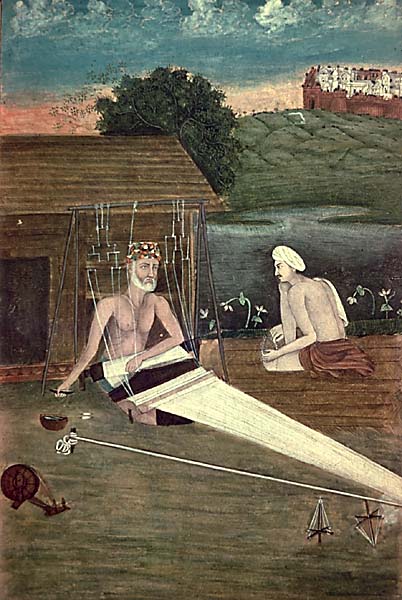
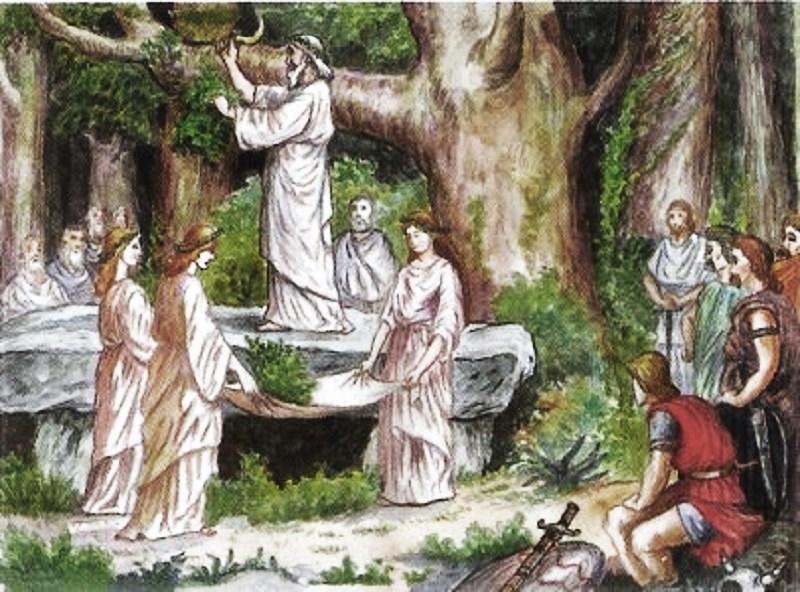
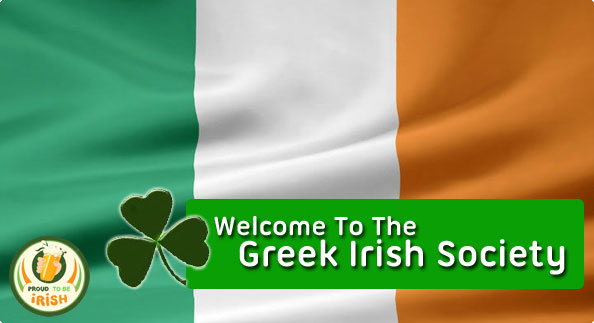


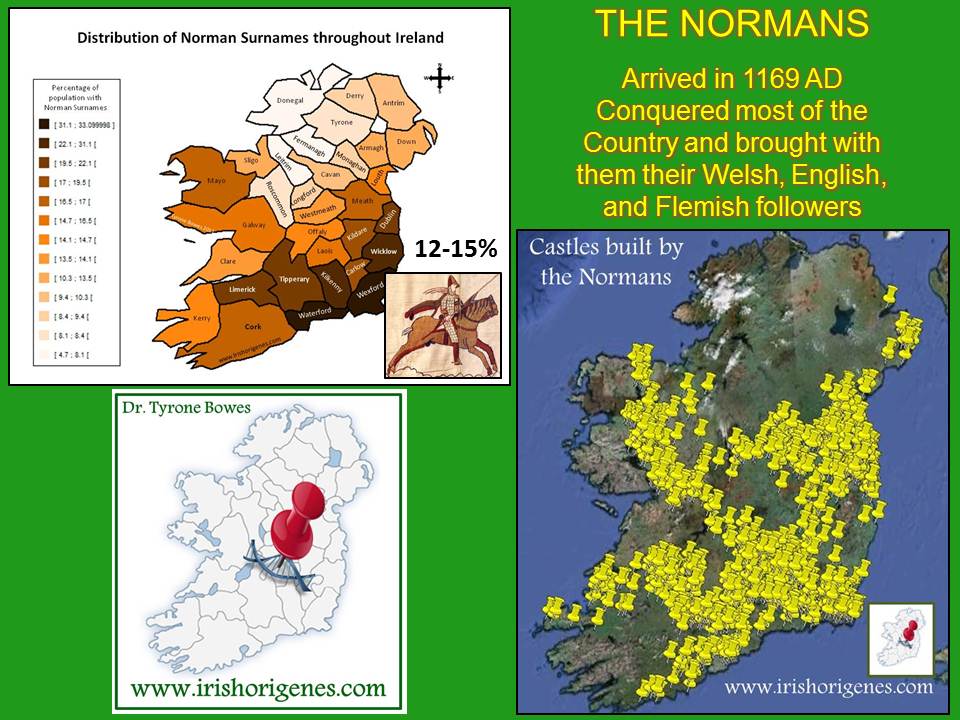
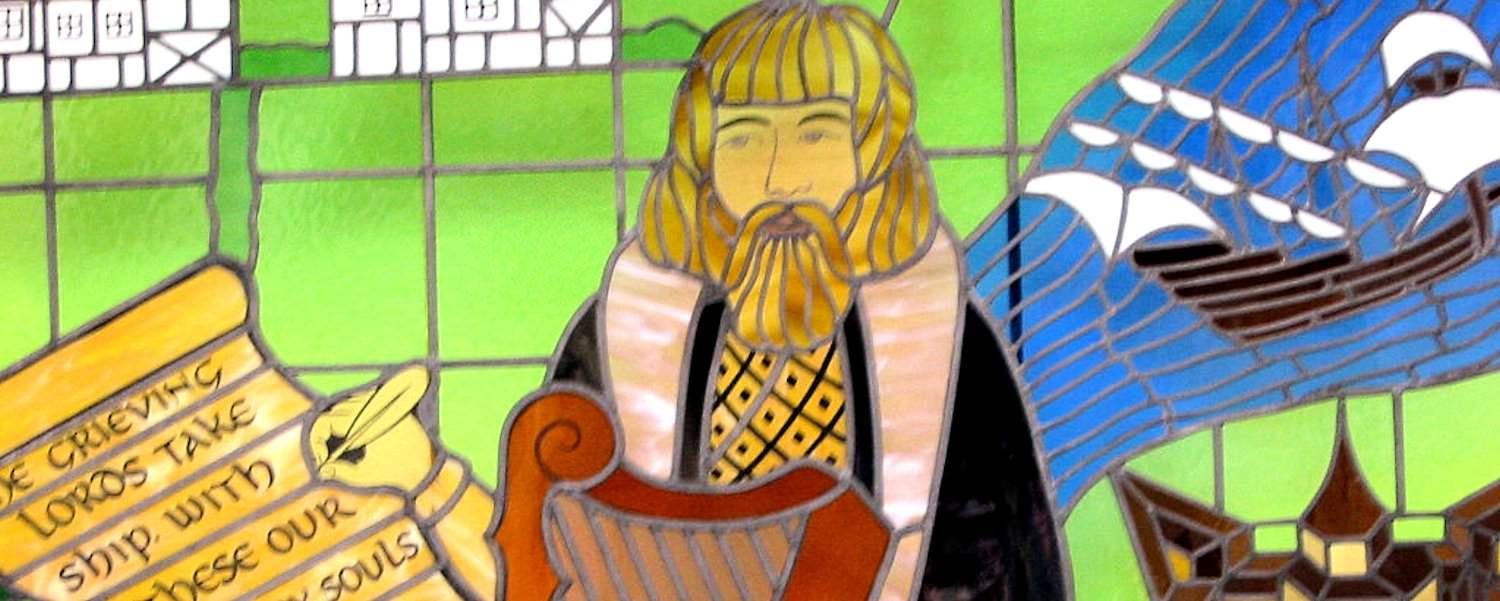
![The Irish Ollam: Go ye and teach all nations Havell, Robert; Smith, Charles Hamilton; C.H. Smith & S.R. Meyrick, <I>The costume of the original inhabitants of the British Islands,</I> London 1815, pl.[IX]; Irish Ollamh and an Heraldic Bard](https://www.gnosticwarrior.com/wp-content/uploads/2019/10/Irish-Olamh.jpeg)